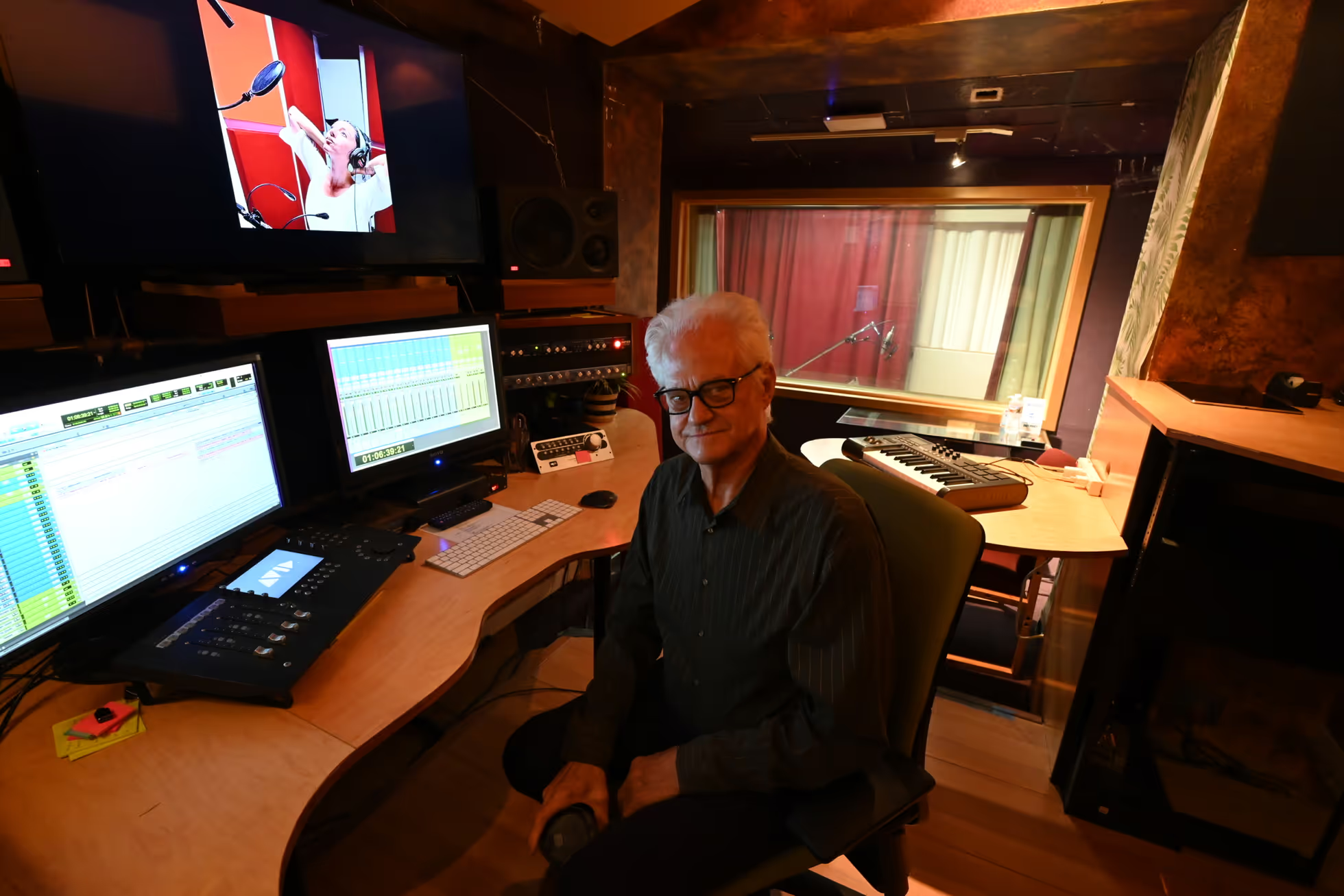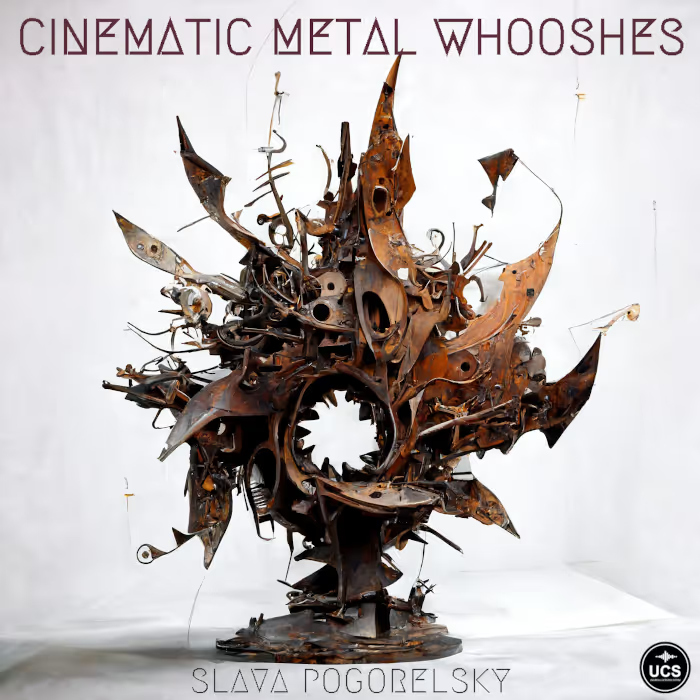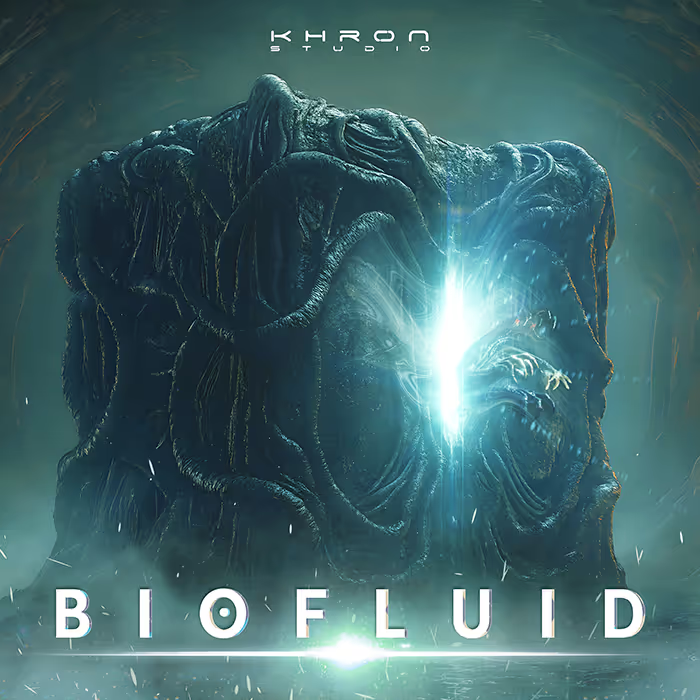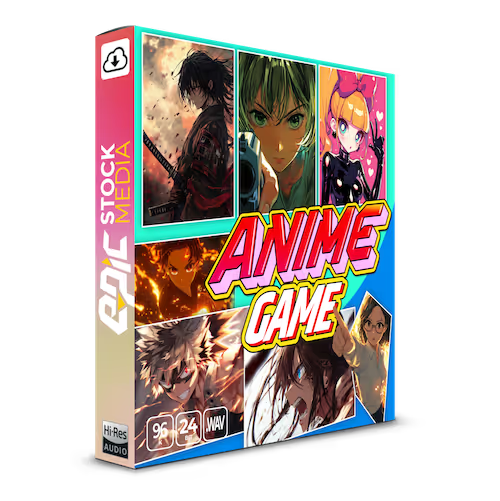DS: You’ve had a long career, can you talk about the start of your career and how you ended up in film sound?
DN: I spent 10 years in a band from Portland, Oregon called Upepo, which was one of the first World Beat bands. We played every college town on the west coast. Mostly all instrumental. Around 1982, we thought about 10 years of that was plenty. I moved down here to San Francisco with another musician, Leonard Marcell and we built a little home studio on Bush Street. We got some pretty big clients right away, one of which was Jaco Pastorius. We were in a very small space, but we had an 8 track and started using electronic instruments and syncing them up with time code, which was pretty radical at the time. Then we realized that there was an interesting variety of clients that we might have, pursuing this new way of syncing, other than mag tape and film stock. We decided that we needed a larger building. We moved to 235 Moulten Street with a guy named Dieter Weihl He had a garage there and we built out a much more extensive studio. Right around the same time, my friend Josh Rosen was working at Digidesign and he said “hey, why don’t you try out this new thing that we’re working on called Pro Tools.” Then we bought the first Euphonix console. All of a sudden, someone suggested “well if you can sync up a band playing, couldn’t you sync up a film” and I said “geez, I guess we could.”
DS: What prompted you to open your own business?
DN: It was a very natural thing. We started in a garage and it was very humble. Although we had an interesting room. It was the most clear opportunity for me in a new town, where I didn’t really know very many people down here. We had our own projects and we had a band called AutoTom and we played at The Stone a few times. We were really inspired by Laurie Anderson too and the whole thing that she was doing with projection on stage with live players. We just needed our own studio to explore that opportunity.
Ghostbox Cowboy
DS: What type of projects do you take on now and what services do you provide?
DN: We’re a very varied studio. It’s interesting because everybody who works there was a musician at one time, but we’re not really in the music business anymore. We don’t want to say that we’re not in the music business, because it’s in our heart and we still take music jobs, but sound to picture and voice and Foley recording is our main focus. We have such great rooms here that are very voice centric, so audiobooks and ADR and anything voice related has become one of our clearest income streams.
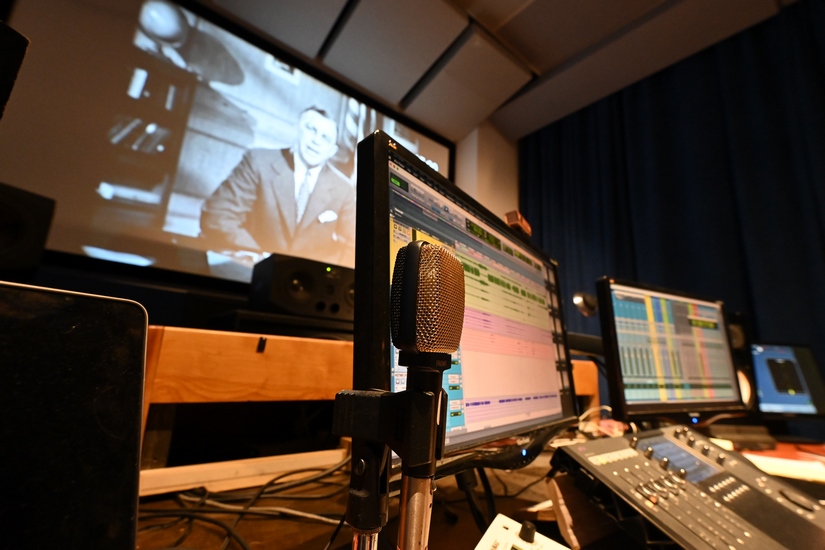
DS: And you’re also working on a toy, is that correct?
DN: That’s right, we work for a company called Tonies USA. They designed a device called a Toniebox with a speaker in it and there’s little plastic figurines that have a chip in the bottom that holds these children’s stories. The suggestion is that rather than giving a child 4-5 years old a laptop or an iPad or even a phone, that maybe their imaginations might be stimulated in a different way, by listening to audio only children’s stories. They can have their different stories in these little cute plastic figurines, put them on top of the box, and listen to these different children’s stories.
DS: You recently moved locations. Can you talk about building your new studio?
DN: This is a very San Francisco story. My previous studio, the building sold and the new owners decided that rather than continuing renting to us and two other recording studios, they wanted to build an office building in an area that had high vacancy rates. We tried to see if there was some room for negotiation there and there wasn’t. I was neighbors with Kim Salyer, who used to be at Video Arts and now has Color A Go-Go here in the same neighborhood. He said “I have more room than I know what to do with, why don’t you come over next door here and take a look and perhaps take over my lease”, which we did. There was one studio that was in this building, but there were a lot of potential rooms that were pretty big with tall ceilings that were office rooms. We spent a lot of time and energy and money developing these into our current studios, which we now have four of in this location.
I believe we now have the only Foley stage with dedicated Foley pits in San Francisco.
DS: Can you describe the 4 different rooms that you have and how you constructed them? And what makes each of the rooms unique?
DN: I believe we now have the only Foley stage with dedicated Foley pits in San Francisco. There were some Foley pits here previously, but they weren’t done to a professional standard. The problem was they were really deep. You could have actually hurt yourself in them. So we rebuilt all the Foley pits, we re-poured the concrete and got dirt and gravel. We made them so that they’re really legitimate Foley pits. That same room also sounds really good for ADR. So we have one room that mainly does those two services, we do Foley in there and we do voice recording, mostly ADR. That’s our Studio 4.

Studio 3 is very very very dead and quiet. We’ve done a lot of A.I. recording with Nvidia. The rooms that you need to do A.I. recording in, have to be the quietest possible rooms. Desmond Shea who I knew from Poolside Studios, built the booth and control room out that’s just completely quiet. It’s as quiet as a whisper room, but it has natural sunlight that comes into it from our Atrium, so it’s really unique in the voice recording industry. We’re also doing a lot of music mastering out of that control room. We have some unbelievable speakers in there and that’s where a lot of our music business takes place.
Then we share a room with Kim Sayler, who I mentioned before, that we’re doing podcasts in. That’s our Studio 2. It’s a very unusual room. It has couches in there. It’s very comfortable. We’ve had a lot of positive feedback about how it feels in the room when people come in to do podcasts and vidcasts.
Studio 1 is a 5.1 mixing studio. It was calibrated by Dan Sperry from Dolby. What sounds great here, sounds great in movie theaters. It also has a nice live room that we’re sitting in right now. This live room is a little bit deader than the Foley room, but it’s pretty versatile. You can record pretty much anything in this room and it sounds good. It’s really quiet, but a little more live than our studio 3 room.
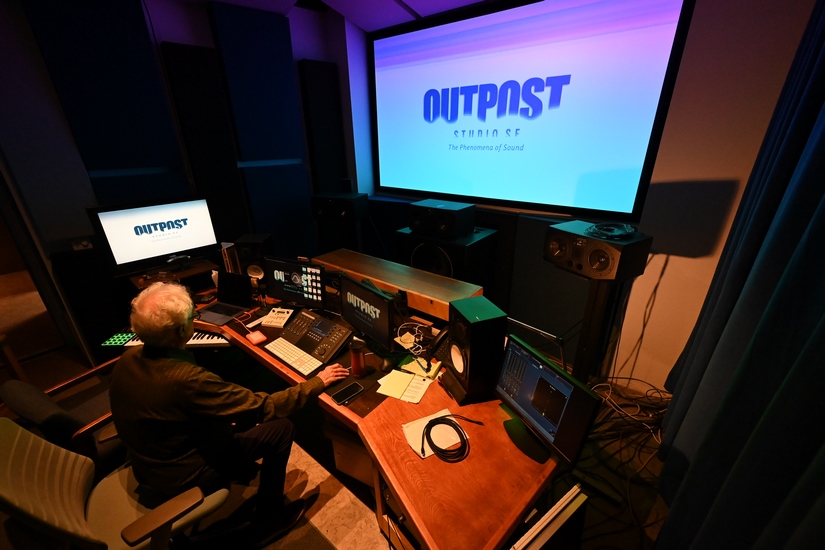
DS: What were some of the things that you considered when you were looking to build out your rooms and what the rooms were going to be like?
DN: We wanted them to be big enough to hold two or three people. When we came over and looked at the place before we built it out, we realized that the high ceilings were amazing, these are 15 foot high ceilings in here. Of course, they’re all baffled off, so you don’t notice how high they are, but it has a subtle effect on the sound. We saw what we had here and realized that we could do a lot of different things. I think the recording studio business has changed a bit. One thing we don’t have is a room big enough to record a band in. Other places in town like Hyde Street Studios do that for a living. It didn’t make any sense for us to try to compete on that level. So we basically do everything else but drum tracking. Although we do have one empty room that’s completely undeveloped, that we could expand into in the future and include that service.
DS: Can you talk about the gear in the different rooms?
DN: Well, we’re an all Pro Tools studio, so we have Pro Tools Ultimate in every room. Certainly the 5.1 HDX mixing system is the biggest and most powerful system that we have. All the rooms have all the same plugins, so it’s all really versatile. That’s how we wanted to have it and that’s how it’s working now.
DS: Okay, and you have a lobby, an atrium, and a kitchen.
DN: Yeah, it’s really impressive when you walk in here. With these gigantic tall ceilings and an atrium that has natural sunlight coming into it. That’s the same sunlight that leaks through a window into Studio 3. It’s so impressive. It’s beautiful to walk in here. That is one thing that I’ve never had in any of the other 6 studios that I’ve built in San Francisco. We’ve never really had a great entryway. It really does have a comforting effect on clients when they walk in and they think “whoa, this is nice.”
DS: Right, well I think that’s a big bonus for Studio 3, for people doing audiobooks, where people are going to be reading for 6, 7, or 8 hours in a day. Having that natural light keeps them from getting fatigued.
DN: Yeah, that’s exactly right, and we’ve received that feedback from the voice over artists that are reading audiobooks and are in there for 6 hours or more. It’s a good feeling for a small dead room. It has a lot of life to it.
DS: And then the atrium is a great place to take lunches and breaks and give yourself some natural light during the day.
DN: Correct.
Little Dieter Needs To Fly
we want to keep this spark of creativity in San Francisco, 415, right in the middle of the City, alive for filmmakers, musicians, and all kinds of audio-visual artists.
DS: Do you have anything else that you would like to add?
DN: We love being in San Francisco. Obviously, San Francisco has a gigantic legacy of sound associated with the city. With all the things that’s going on with what we went through with COVID, we want to keep this spark of creativity in San Francisco, 415, right in the middle of the City, alive for filmmakers, musicians, and all kinds of audio-visual artists.
DS: And you can also connect with other studios as well?
DN: Absolutely, with Source Connect, Audio Movers, Zoom or any number of things that are available. There’s quite a few options and we have them all.
DS: Thank you, Dave.
DN: You’re welcome, Doug.
A great big thank you to Dave Nelson for taking the time to talk about his studios. You can find Dave Nelson on IMDb here and at Outpost Studio SF here. Don’t forget to check out some pictures of the studios here.

